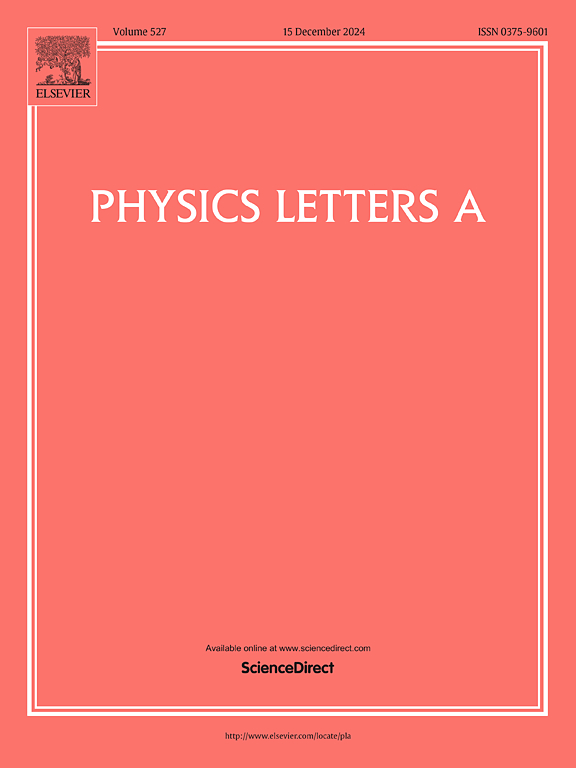Dynamical systems of scalar fields in f(Q,C) gravity
IF 2.3
3区 物理与天体物理
Q2 PHYSICS, MULTIDISCIPLINARY
引用次数: 0
Abstract
This paper investigates the dynamics of a scalar field within the framework of modified gravity, specifically using the formalism, through a dynamical system approach. We investigate a particular scalar potential, and derive the associated autonomous system of equations, which describes the dynamics and characteristics of the scalar field. We examine the fixed points to understand the stability and behavior of cosmological solutions, particularly the transition from decelerated to accelerated expansion. Our analysis reveals that six fixed points for non-interacting scenario represent stable configurations which indicate dark energy-dominated phases and the other fixed points represent saddle behavior which indicate the matter-dominated phases of the Universe. The analysis reveals that the scalar field in gravity provides a natural mechanism for the Universe's accelerated expansion at late times. The Universe's accelerated expansion which is fueled by dark energy, is supported by our model in which the transition redshift and the current values of the deceleration and equation of state parameters are found as , and respectively. Our model exhibits excellent consistency with observational datasets, such as Hubble and Supernovae data sets which affirm its capability to offer fresh perspectives on the accelerating Universe. Finally, we discuss the broader implications of this model for the late-time evolution of the Universe and highlight potential areas for future research.
重力f(Q,C)中标量场的动力系统
本文利用f(Q,C)形式,从动力学系统的角度研究了修正引力框架下标量场的动力学问题。我们研究了一个特定的标量势,V(φ)=V0sinh−α(β φ),并推导了相关的自治方程组,它描述了标量场的动力学和特征。我们检查不动点,以了解宇宙解的稳定性和行为,特别是从减速到加速膨胀的转变。我们的分析表明,非相互作用场景的6个不动点代表稳定构型,表明暗能量主导的阶段,其他不动点代表马鞍行为,表明宇宙的物质主导的阶段。分析表明,f(Q,C)引力中的标量场为宇宙后期加速膨胀提供了一种自然机制。我们的模型支持宇宙在暗能量推动下的加速膨胀,其中跃迁红移和减速和状态参数方程的电流值分别为ztr≈0.654,q0= - 0.546和ω0= - 1.0132。我们的模型显示了与观测数据集的良好一致性,例如哈勃和超新星数据集,这些数据集肯定了它为加速宇宙提供新视角的能力。最后,我们讨论了该模型对宇宙晚期演化的更广泛影响,并强调了未来研究的潜在领域。
本文章由计算机程序翻译,如有差异,请以英文原文为准。
求助全文
约1分钟内获得全文
求助全文
来源期刊

Physics Letters A
物理-物理:综合
CiteScore
5.10
自引率
3.80%
发文量
493
审稿时长
30 days
期刊介绍:
Physics Letters A offers an exciting publication outlet for novel and frontier physics. It encourages the submission of new research on: condensed matter physics, theoretical physics, nonlinear science, statistical physics, mathematical and computational physics, general and cross-disciplinary physics (including foundations), atomic, molecular and cluster physics, plasma and fluid physics, optical physics, biological physics and nanoscience. No articles on High Energy and Nuclear Physics are published in Physics Letters A. The journal''s high standard and wide dissemination ensures a broad readership amongst the physics community. Rapid publication times and flexible length restrictions give Physics Letters A the edge over other journals in the field.
 求助内容:
求助内容: 应助结果提醒方式:
应助结果提醒方式:


